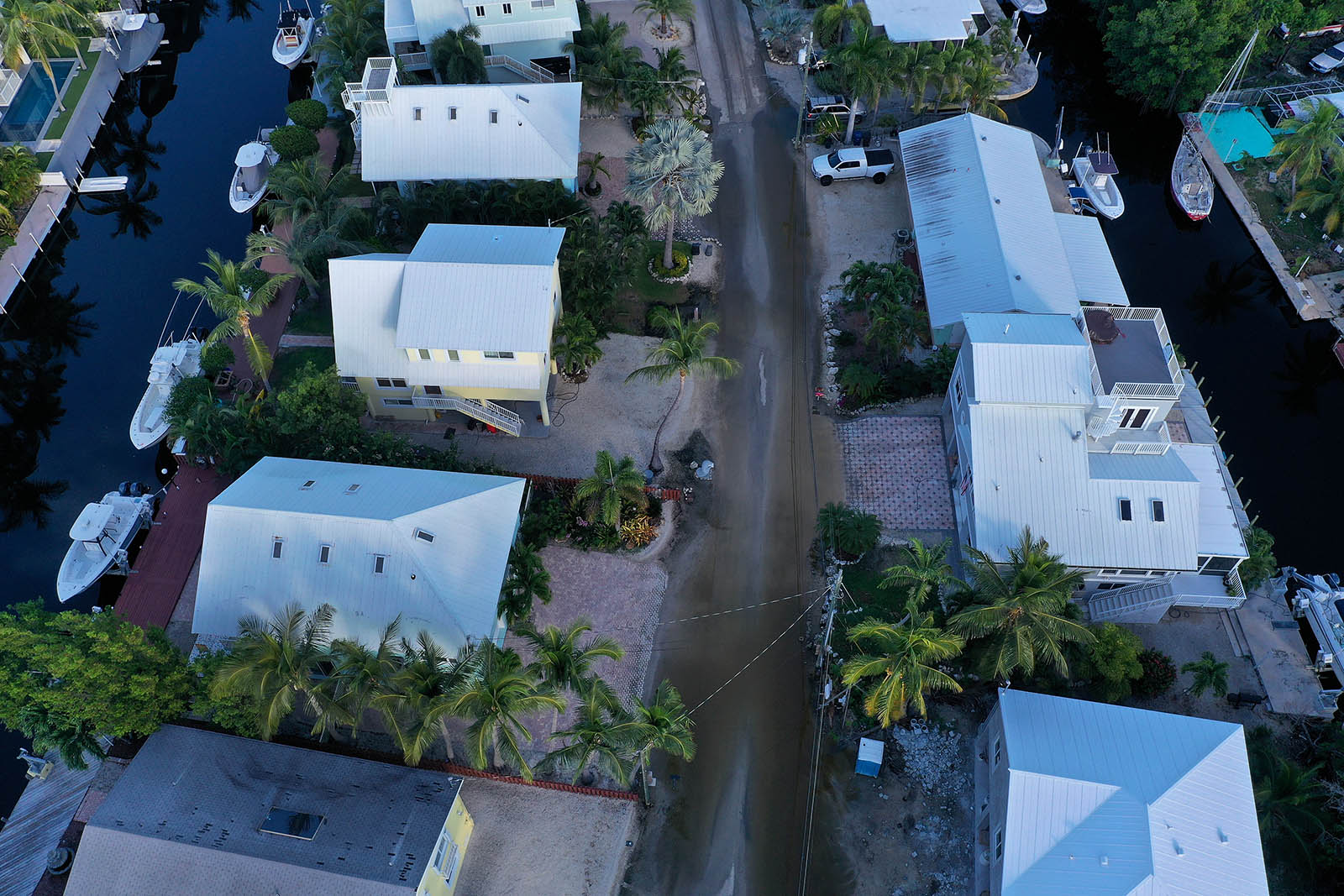The Great Climate Migration of the United States

A street flooded with ocean water in Florida. Cities like Tampa, Jacksonville and Baton Rouge are at risk from exposure to sea level rise — but at the same time, could also be receiving communities for climate-related migrations.
Photo: Joe Raedle/Getty Images
Over the next 30 to 40 years, low lying coastal regions of the U.S. are likely to experience a huge disruption from rising sea levels. According to academic projections, millions of people may be forced to relocate to inland cities. This could lead to a mass migration that hasn’t yet been seen since the 1916 Great Migration.
BRINK asked Professor Mathew Hauer of Florida State University to estimate how many people this could impact in his view.
HAUER: So in my estimation, it’s about 13 million on the higher end, and on the lower end, it’s probably somewhere between one-and-a-half and three million. The number depends on two primary factors: One is the amount of anticipated coastal population growth between now and the end of the century, and the second would be the amount of increase in sea level rise we could expect.
People will start to see damages associated with sea level rise much more explicitly — in the form of decreased appreciation of property value, an increase in their commuting time going to work as roadways start to flood out and economic damages associated with saltwater flooding.
Eventually, we’ll reach a tipping point where some people will say, “This is too much already,” and they will move. Other people will wait longer and say, “I’m going to move when it gets really bad.” Lastly, some people may be unable to afford relocation.
BRINK: Have you done any sort of projection around how that movement will happen and where those people might start going to?
HAUER: Most migrations will probably be relatively shorter distances. It’ll probably be toward an economic center — where the economy is doing pretty good — and a place where people already have friends and family.
So you’ll see major economic cities that are relatively close to the coastline, but not on the coastline, being impacted as well, such as Atlanta or Austin.
BRINK: And what will this migration mean for these cities?
HAUER: For some cities it could be a boon: The rust belt cities in Ohio, Minnesota and New York, from what I understand, are chomping at the bit to position themselves to be climate-receiving communities. These cities see this as an opportunity.
Others are going to struggle: Places like Tampa, Jacksonville or Baton Rouge will be exposed to sea level rise, but at the same time, could be a receiving community too.
If a city is already struggling to manage its growth, this becomes one of those additional stressors, where the city has yet to account for increased cost of living, stresses on infrastructure, water infrastructure, traffic infrastructure, transportation and so on.
BRINK: So given that this is a fairly slow-moving crisis, what can local governments do to prepare for this?
HAUER: The simplest, barest thing that local governments can do is to incorporate climate migration into their long-range strategic planning, essentially saying, “Hey, we should think about this and take it into account,” because then they’re less likely to be blindsided and much more likely to at least position their community into a more positive fashion.
Employers should think about where their business is going to be best positioned for climate change risks: For some, that’s going to be moving stores, offices and headquarters, while others will only need micromovements.
Then there’s a number of different things around just general economic vibrancy that will help cities manage climate migrants. Some of the cities in Michigan or Minnesota could position themselves to take advantage of the streams of internal migrants for their communities.
BRINK: Do you think that this is going to have a big impact on the shape of America demographics?
HAUER: Yes, it’s going to have a big effect. We called the migration of African-Americans out of the U.S. South into the industrialized North in the early part of the 20th century the Great Migration — and that was around 10 million people or so who migrated.
Most people don’t want to move — they call this the immobility paradox. If they do want to move, they tend to move shorter distances where they have existing ties to an area. There are past situations where others did go longer distances. For example, after Hurricane Katrina, some people left New Orleans and they went to Syracuse, New York. Also, some people went from Miami after Hurricane Andrew to Albany, Georgia. However, most people will probably not make such preemptive moves.
BRINK: How can companies prepare for this?
HAUER: As an employer, you can think about where your business is located and the kind of infrastructure that you have — your offices, your retail spaces and so on. Employers should then think about where the business is going to be best positioned, given what we know about climate change.
For some, that’s going to be moving stores, offices and headquarters, while for others will only need micromovements within a given city. Others are going to be broader, maybe out of regions into other ones, like a coastal company. Those companies might like being close to the beach, but employers will need to start thinking about what other sort of “climate safe” area can still provide similar natural amenities for attracting talent.
BRINK: What impact will it have on insurance markets?
HAUER: I think the insurance market is going to shift pretty radically within the next 20 years, or less. We’re moving into a period where the life of a 30-year mortgage will become subjected to climate effects. So if you’re insuring that property, that is unlikely to be feasible in the long run.
A lot of people can afford to live in risky areas because insurance is cheap at the moment — it’s improperly priced in a lot of ways. So if insurance goes up, they’ll be priced out. Not necessarily by the cost of their mortgage, but the cost of their flood insurance.
BRINK: Is there going to be a tipping point that we should look out for, where this is going to start to accelerate?
HAUER: We have a very poor grasp of tipping points since we have very few historic analogs to actually look at. There’s a couple of examples of islands in the Chesapeake Bay that were abandoned due to sinking, but that was 100 years ago. There has also been dam relocations and stuff like that. All of those examples pale in comparison to the size of the coastline in the U.S. and in some other countries that have very large, flat coastlines.
Some people think it will be a pulse event that turns people around, like a hurricane or another natural disaster. Others think it will be this continual press where people will say, “I’m done with this,” and just sort of organically move. Some say it will be the changes in insurance market that’ll cause people to move. But we’re pretty deep into speculation at this point because there’s so little historical record on this.







